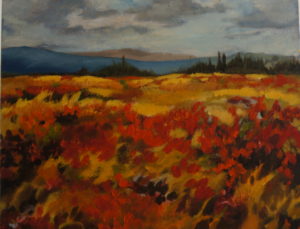Today’s most effective leaders are sharply focused on developing more innovative employees and innovation-friendly organizational cultures. It’s no longer enough to have a skilled and technically proficient workforce—employees also need to be creative, collaborative, and communicative. In recent years, the use of the arts by corporations to meet a wide range of employee training and organizational development needs has grown remarkably. Why? Because artistic processes and experiences are by their very nature creative endeavours—including creative and critical thinking, problem identification and solution, effective written and oral communication, teamwork, and collaboration—are deeply rooted in the artistic tradition. ~ Leader to Leader Journal by Harvey Seifter
Art collections in the workplace offer many benefits:
- Art creates an innovative and stimulating environment. Art teaches tolerance. It sparks conversation and invites new perspectives.
- Art has science proven health benefits. It directly influences people, even if they are unaware of the art. Art is a powerful habitat vitamin.
- Displaying art exhibits the corporation’s support of the arts and investment in community.
- Creating a comfortable inviting space expresses value to the people who dwell in the space.
- Displaying corporate collections gives the public an opportunity to view amazing art they may never otherwise have access to.
- Many art collections in corporations have continued to increase investment value over the years.
I enjoy the pleasure of working with corporate and private sectors who believe people and relationships are the heart of their business.
Amazed at the incredible scope art has, recent diverse inquires illuminate the powerful benefits of art in the workplace:
“It’s an extremely high stress field. We have been studying ways on how to decrease stress in the workplace for our staff. Art is a powerful way to do that.” –NYC Hedge Fund Managing Partner
“Patients love the painting you donated! We have located it to an area in the hospital where both staff and patients benefit”.
“I had a little boy who is quite autistic visiting my office. He went right up to your painting ‘Sunset’ and just quietly stared. I gently asked him, “Tell me what you see.” Without taking his eyes off of it, he replied, “The beach.” It was a special moment, and certainly affirmation for me that the Arts have the ability to cross all academic divides and social barriers.” ~Educator.
“The founding presidents established an art gallery within the main office. We as employees enjoy the art that is displayed throughout the building. I have been fortunate to be surrounded by people who share ideas and promote others. While seeing your work )(I pondered how many corporations would like to have your artwork in their offices.” -Dofasco
“We host an event twice a year for those overwhelmed with a diagnosis, care givers, charity workers, grieving, depressed, needing support or time to heal. A musician plays classical music and we put a picture on a slide before meditations and prayer. The breath of life in nature. That’s hopefully what I’m trying to connect for folks, their soul to something larger — without definition — the mystery. Your artistry touches something very deep in me and obviously others and you get to reach people I’ll never be able to. “~ Minister
The company commissioned a painting for the lobby from a famous artist. The painting was unveiled at a catered staff luncheon. Employees were surprised with gifts of individual prints of the painting.~ Client
A waiting area feels like a library with cozy chairs, books, soft lighting and beautiful art. The surgeon suggested to me offering patients a comfortable space instills relaxation that can be infectious among patients in the common room. A relaxed patient is easier to treat, the experience is more positive for all.
Creating healthy, pleasing, stimulating, or relaxing working environment directly affects humanity and may produce a surprising lasting impression.
A study on professionals who spent their lunch hour in an art museum had surprising results. They exhibited lower resting heart rates, and blood pressure. The unexpected result? They performed more random acts of kindness.

